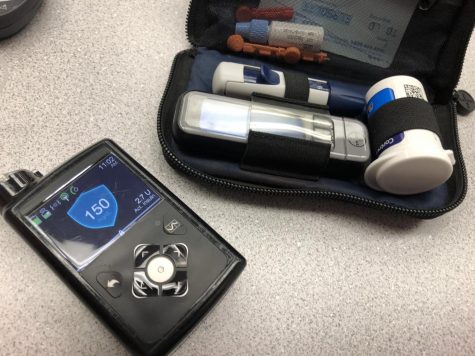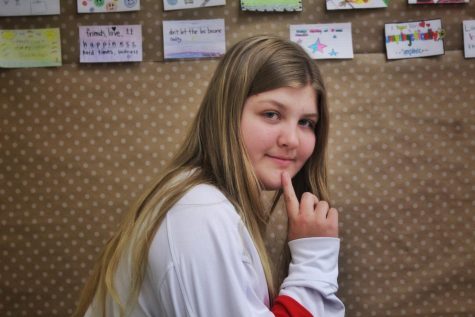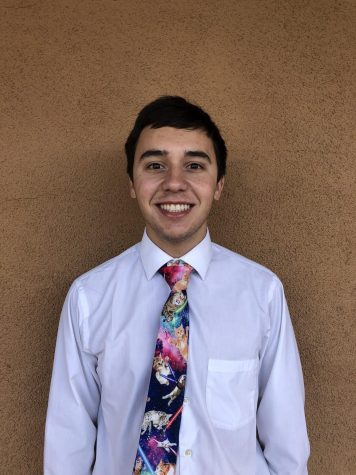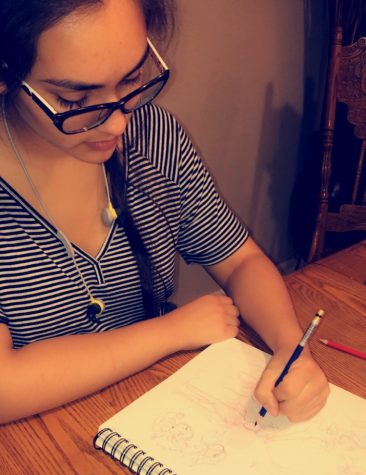November: Bringing Awareness to Dia-BEATING the Disease

A full night’s rest is rare for type one diabetics. Usually, they are awoken by a low or high blood sugar that needs immediate fixing. If they go back to sleep, they might not wake up.
This a reality for millions of people in the United States. In fact, more than 40,000 people of all ages are diagnosed every year. The need to constantly regulate blood sugars and insulin flow in order to feel the way that “normal people” do every day is a part of regular life for those afflicted with Type One Diabetes.
Diabetics must do this because their bodies don’t work in the same way that other people’s do.
Type One Diabetes is an autoimmune disease in which the body’s good cells, which usually fight bad cells which cause sickness, will fight off other good cells that regulate how the body takes in food. People without these cells can produce insulin in the pancreas, which regulates that person’s blood sugar and keeps it at a safe level, usually from 80 to 120. Diabetics don’t have this ability. They have to use insulin pumps or injections whenever they eat to keep their blood sugars within this level.
Blood sugars that are either above or below this level are detrimental to the health of a person and have serious side effects. Low blood sugars are treated with eating fast acting sugars in order to bring it back up to a safe level. High blood sugars are treated by giving more insulin as it is needed. Failure to regulate a low blood sugar can result in Diabetic Ketoacidosis, or, in simpler terms, coma and sometimes death. High blood sugars for long amounts of time can even cause damage to organs and bodily functions. On a smaller level, normal illnesses such as a simple cold or even hormone influxes can send a blood sugar spiraling out of control.
“I’ve been through two comas, but I’ve survived,” quoted junior Mena Basta, who has had the disease for thirteen years, “When I was sick with pneumonia last year, my blood sugar was always messed up.”
Not to be mistaken with Type Two Diabetes, which is more common in older people and those with bad diets, Type One Diabetes is entirely up to genetics. A person is born with Type One Diabetes, whereas Type Two Diabetes is a lifestyle choice. Type Two Diabetes can be cured. Type One cannot. Those with the disease have no way of getting rid of it. Yet.
Countless hours and money have gone into research to stop the disease. JDRF, or the Juvenile Diabetes Research Foundation, is one of the largest companies dedicated to helping the cause with various events such as the Walk to Cure and Ride to Cure to raise money. Senior Haley Meece has been a part of this company as a volunteer since 2006. Other students such as Sophomore Chayse Lewis are involved by attending special camps with other Diabetics from all over the state of California.
“I haven’t seen a diabetic yet who isn’t healthy and living their life. Diabetes doesn’t put people down because it only makes them better,” says junior Mena Basta.
There are many steps the normal routines of diabetics that would be fatal to forget. The set sites, a needle that is inserted into the skin and delivers insulin throughout the day, has to be changed every three days. Another insertion, the CGM or continuous glucose monitor, regulates the blood sugar throughout the day and must be changed every week. Insulin, the fluid of life for diabetics, has to constantly be checked and filled. It cannot run out. Blood sugars need to be checked by the prick of a finger at every meal. The strips inserted into the meter that the blood is read on need to be checked and refilled just like the insulin. Batteries can’t run out. Then, Diabetics have to make sure they have food and sugar with them in case of a low as well as everything else listed above.
“Remembering to change things like insulin and stuff is hard because you don’t focus on it as much with everything else going on,” Chase says.
Diabetics only hope to educate others on their daily lives and give them insight on their hardships.
“I think that nowadays, there is a lot more advocacy for diabetics. People aren’t as ill-informed as they were before, so navigating high school is a lot better than it could be because people are starting to recognize that it’s out of our control,” Basta says.

Haley Meece is a senior at RHS and is just trying to get into college in order to excel at her passions. She is the president of Drama Club and the...








